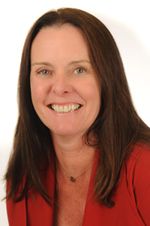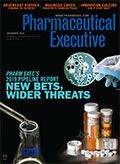Steadying the Path of Good Science
Pharmaceutical Executive
As this year's Pipeline Report illustrates, there remains an imbalance between funding and incentivizing new drug discovery in some therapeutic areas and rewarding the risk-based nature of these innovations. Imagine if we could solve this conundrum in science?
Of the six therapeutic areas we chose to focus on in this year’s Pharm Exec Annual Pipeline Report, two are facing a crisis. One is Alzheimer’s disease and the other is antibiotics. For all the activity in the Alzheimer’s pipeline, reflected by the breadth and number of trials, the current science is not proving successful. Many large companies,
Lisa Henderson

realistic to the lack of promising science, have exited Alzheimer’s. In antibiotics, which has a small pipeline but has made inroads in science, companies are exiting for a different reason: the financial equation doesn’t make sense. Both TA areas are potential blockbuster markets. Alzheimer’s doesn’t lack funding and antibiotics suffers from an innovation problem.
Dr. Evan Loh, president, chief operating officer, and chief medical officer of Paratek Pharmaceuticals, recently spoke at an industry event, discussing his company’s long history in the antibiotic space and its recent successes. On Oct. 2, FDA approved Seysara for the treatment of inflammatory lesions of non-nodular moderate to-severe acne vulgaris in patients nine years of age and older, and Nuzyra for adults with community-acquired bacterial pneumonia and acute skin and skin structure infections. Loh joked that Paratek didn’t plan for the drugs to be approved on the same day, and then elaborated on the need to take advantage of the legal pathways that allowed the company to pursue development in this public health space, as well as the value of taking advantage of early scientific meetings with FDA.
Those legal pathways include the 2012 passage of Generating Antibiotic Incentives Now, or GAIN. As part of FDA’s Safety and Innovation Act, GAIN provides manufacturers an additional five-year exclusivity period for antibiotics that treat serious or life-threatening infections.
In addition to GAIN, another pathway is the limited-population antibacterial drug (LPAD) pathway authorized in the 21st Century Cures Act that allows FDA to review and approve new antibiotics specifically for use in patients with unmet medical needs. The draft guidance is under public comment, with an anticipated April 1 finalization. And FDA Commissioner Gottlieb continues his press on the antibiotics market.
Loh, who is also vice chair of the Antimicrobials Working Group, made up of biotech companies focused on antimicrobial development, said, “I think where those meetings could go wrong is if you are not really listening to the FDA and what it is suggesting, and what it is not saying.” He also advised that it is very important to pay attention to CMC and ensure you have the right CMO.
There is a conundrum in science. If discoveries rely on venture capital to fund, many of those on that side of the world have a “herd mentality” and they focus on fads and themes. For example, the current oncology market that focuses on the rare vs. what the public needs, such as antibiotics, which is not seen as appealing. And regulatory authority pathways are just as important on the road to innovation, as indicated in Paratek’s approvals.
Jay Galeota, president and chief operating officer, G&W Laboratories, and also a member of our EAB, said, “Antibiotics is the only market that is constantly reinventing itself (as bugs morph and become new, different, and resistant). The perceived lack of attractiveness is a big issue, which FDA and others recognize, yet recent incentives do not seem to be enough to spark renewed interest in discovery and development here. Considering the most expensive hospital bed by far is the septic, isolated ICU one, something seems out of balance.”
And it is out of balance. If the science of Alzheimer’s improves, just imagine cured a la hep C, what that would mean for not just quality of life, but also for the healthcare system? But would health payers actually pay for the curative therapy? The innovation of being able to address the adaptable bacteria crisis would also score major wins for the overall healthcare system as noted in Galeota’s statement. Drug discovery is risky and innovative and good science should be rewarded.
Lisa Henderson is Editor-in-Chief of Pharm Exec. She can be reached at lisa.henderson@ubm.com. Follow Lisa on Twitter: @trialsonline

Addressing Disparities in Psoriasis Trials: Takeda's Strategies for Inclusivity in Clinical Research
April 14th 2025LaShell Robinson, Head of Global Feasibility and Trial Equity at Takeda, speaks about the company's strategies to engage patients in underrepresented populations in its phase III psoriasis trials.
Key Findings of the NIAGARA and HIMALAYA Trials
November 8th 2024In this episode of the Pharmaceutical Executive podcast, Shubh Goel, head of immuno-oncology, gastrointestinal tumors, US oncology business unit, AstraZeneca, discusses the findings of the NIAGARA trial in bladder cancer and the significance of the five-year overall survival data from the HIMALAYA trial, particularly the long-term efficacy of the STRIDE regimen for unresectable liver cancer.